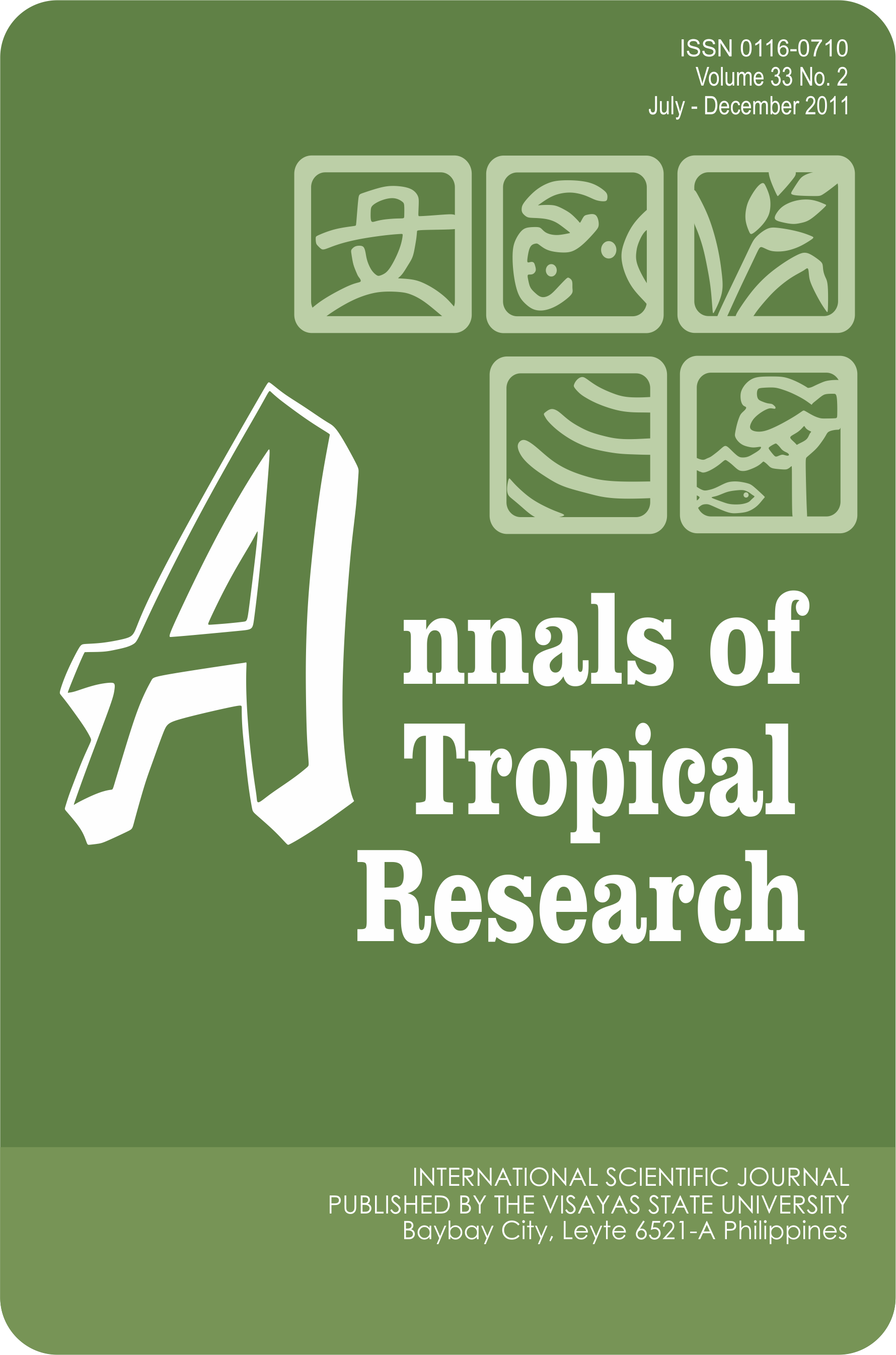Growth and Survival of Mangrove Seedlings under Different Levels of Salinity and Drought Stress
DOI:
https://doi.org/10.32945/atr3326.2011Keywords:
drought stress, water potential, salinity, survivalAbstract
Water availability and salinity are determinants of growth, survival and establishment of mangrove species. This study aimed to compare the ability of the mangrove species to survive extreme water stress, and to determine differences in growth performance and biomass allocation between mangrove species grown in different water levels and saline conditions. Seedlings of Lumnitzera racemose, Rhizophora apiculate, R. mucronate and Avicennia marina were used. A dry-down experiment was done to compare the ability of mangrove species from different zonations to survive drought stress by evaluating survival rates after-re-watering consequent to drought exposure. The different mangrove species were grown at different water levels (dry, well-watered, flooded) and different salinity levels such as low (3-5 ppt), high (25-27 ppt) and pure seawater (32 ppt) to evaluate the growth performance and biomass allocation of the mangrove seedlings.
L. racemosa was the most drought tolerant, followed by R. mucronata and A. marina while R. apiculata was the most drought sensitive. There is a possibility that A. marina may displace the current distribution of R. apiculata in the middle zone while the distribution of L. racemosa and R. mucronate in the landward and middle zone, respectively could be retained. The number of leaves of A. marina was significantly higher than R. apiculata and R. mucronata but was only comparable to that of L. racemosa across all salinity levels. L. racemosa was only significantly different from the two Rhizophora spp. under pure saline treatment. Root length of A. marina was significantly higher R. apiculate but statistically similar to R. mucronata and L. racemosa. The capacity for root growth may allow roots to exploit water from dry soil and could correspond to the drought tolerance of A. marina, R. mucronate and L. racemosa. There was no significant effect of water and salinity stresses on the biomass allocation.
Downloads
Submitted
Published
How to Cite
Issue
Section
License

This work is licensed under a Creative Commons Attribution-NonCommercial-ShareAlike 4.0 International License.











